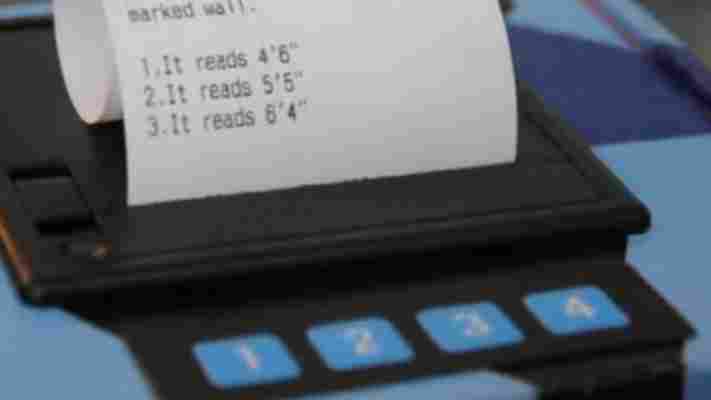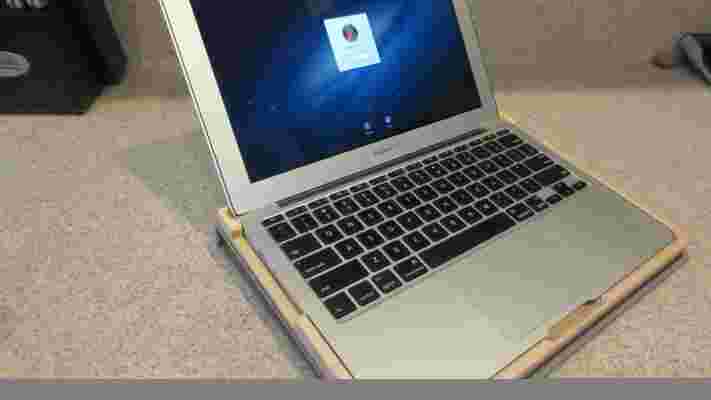Google today updated its Platform Versions Web page for Android, and it looks like the slow adoption story continues: Android 4.x still isn’t even at the 30 percent mark. More specifically, 2.7 percent of Android users are now on version 4.1 (Jelly Bean), while 25.8 percent of Android users are now on Android 4.0 (Ice Cream Sandwich), according to Google’s own data.

More than half of Android users are still on version 2.3 (Gingerbread), which has 54.2 percent share of the droid’s pie. Furthermore, third place (after ICS in second) is still held by Android 2.2 (Froyo), with 12.0 percent share.
Last month, we reported ICS was at 23.7 percent and Jelly Bean was at 1.8 percent . In other words, the gains have been minuscule: just 2.1 percent for ICS and 0.9 percent for Jelly Bean.
In less than two weeks, there will be a new version of Google’s mobile operating system: Android 4.2 (Jelly Bean). Yes, Android 4.1 and Android 4.2 have the same codename, much like Éclair was both version 2.0 and 2.1. The first Jelly Bean was announced in June 2012 and the second Jelly Bean was announced in October 2012 .
Unfortunately, those Jelly Bean releases aren’t the ones that will fix Android’s fragmentation problem. Maybe it will come down to Key Lime Pie, or maybe the issue will just never be solved.
The adoption of new Android versions continues to be very slow because updates are being rolled out for current devices at a snail’s pace, as users have to wait on carriers and/or manufacturers. We can expect Jelly Bean to increase share more and more rapidly, especially as new devices ship from Google and its partners, but it’s going to be a very long time before it passes Froyo and ICS, let alone takes the number one spot from Gingerbread.
We’ll be watching very closely to see what kind of impact the new Nexus line of products will have on Jelly Bean’s share.
See also – Google reveals the Nexus 4: 8GB for $299, 16GB for $349 available November 13 and Google officially announces the Nexus 10: 16GB for $399, 32GB for $499 available November 13
Image credit: Arianne van Noordt
The Choosatron is a fully-hackable and Wi-Fi enabled Choose Your Own Adventure-style story printer
Choose Your Own Adventure books are a pretty novel and interactive form of storytelling, provided the reader doesn’t change their decision every few pages or write reference notes in the margins.

Software developer Jerry Belich is hoping to re-energize the genre with a Kickstarter campaign for the Choosatron , a Wi-Fi enabled and fully hackable story printer that spits out Choose Your Own Adventure style stories on everyday receipts.
It’s refreshingly simple. The tiny kit prints the opening page of the story, before grinding to a halt with four possible choices. The reader hits the corresponding button on top of the Choosatron to select the next ‘page’, until the story concludes in some form or another. Just like any old receipt printed in a brick-and-mortar store, the reader can also keep their version of events indefinitely by tearing it from the machine.
Each Choosatron comes as an assembly kit with additional stories available to download over Wi-Fi. Users will also be able to write their own stories and program them into the machine using open and free software, before posting them online or sharing them with an SD card.
The device itself runs on a Spark Core (STM32 32-bit ARM Cortex M3 microcontroller paired with a Texas Instruments CC3000 Wi-Fi module) in addition to an inkless thermal printer, on-board memory for cataloging stories and a keyboard for user input.
The Choosatron already has over 25 authors on board to write a number of initial Choose Your Own Adventure-inspired stories, which will be collected into a book available to Kickstarter backers.
“The Choosatron hardware and software have been functional since last summer, and even survived a five-week trip to the UK,” Belich said. “I’ve had feedback from hundreds of people to help make this kit as fun, versatile, and affordable as possible, while still leaving room to fund further development.”
Early backers can pre-order a Choosatron for $129 on the Kickstarter page, with subsequent units rising to $139 apiece. There’s also a clear case kit going for $149, as well as the chance to have a personalized story written by Belich himself for $349.
The crowdfunding campaign has 32 days to raise $22,000. To continue, do you:
As always, the choice is yours.
Pad & Quill’s Cartella case for MacBook Air – Where style dances elegantly with protection
Back in April, I finally had a chance to get my hands onto one of Pad & Quill’s lovely Aria cases for the iPad Mini. I was duly impressed by the construction, and in the months that have followed, the Aria even protected my Mini from a fall onto hardwood from 13 feet. So when the company got in touch to ask me if I’d like to review its Cartella Linen case for the MacBook Air , I jumped at the chance.

The first thing that you’ll notice about the Cartella case is that it’s very similar in form to the Aria, as well as Pad & Quill’s other book-like protective gear. The company has stuck with the same wooden interior of the case, but we’re told that the most recent update holds the Air tighter than previous models. While it definitely adds both size and weight to your svelte Air, it’s not so large as to be cumbersome or intrusive.
I’m a big fan of the way that the Cartella case folds back on itself, boosting the Air to a more comfortable typing position. The only issue that I have is that, because of the wooden frame, it can raise the front of the Air to a less-comfortable position for your wrists. However, when typing with the Air on my lap or on most desks, I’ve not had any issue with ergonomics.
All of the side ports are accessible, and I’ve generally been very happy with how firm my Air has sat inside of the case. While I’m also a big fan of the BookBook from Twelve South , I feel that the improved airflow under the laptop with the Cartella case could be quite useful to those of us who tend to run our little Airs for more intense applications such as photo or video editing. That’s not to fault the BookBook, as it’s been a favorite of mine for quite some time, but it’s definitely a differentiating factor between the two.
Another interesting addition is a document pocket on the cover of the Cartella. While you don’t want to overstuff it with something like a thesis, it’s the perfect size for 4 or 5 sheets of paper that you might have been using for note taking or sketching.
All that said, I do have a couple of issues with the Cartella, but they’re minor. I keep my fingernails very short, and when my Air is closed, it’s difficult to open when inside of the case. Though there’s a detent to allow access to the lid, I feel that Pad & Quill could have perhaps made it a bit deeper to allow for easier opening of the device. I also wish that there was some way to keep the cover attached to the Air, for those times when you perhaps don’t want to have an elevated typing surface. Though that would admittedly not be very often, the option would be welcome.
All said, I think that Pad & Quill once again has produced a winner in the Cartella case. I’m a big fan of the fact that the company is giving you a choice between a leather and linen cover, and the elastic closure still maintains a sense of style for the journal-carrying hipster in all of us. For a mere $79, it’s going to be hard to find a better-constructed case anywhere, and I can almost assure you that you won’t find one that looks this great.
